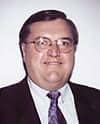Mercy Health Partners reaches out by providing various programs to combat sleep disorders.

Sleep medicine is a field that is steadily gaining acceptance and popularity—and consequently the market is growing increasingly competitive. In Toledo, Ohio, for example, nine sleep centers serve the metropolitan area of more than 400,000 people, with at least a dozen laboratories serving nearby outlying, rural communities. To shine in such a crowded niche, Mercy Health Partners (MHP) devised a system involving several sleep centers that work in concert with one another, reaching out to the community and devoting a multi-faceted staff to the complex task of diagnosing and treating sleep disorders.
MHP’s Sleep Disorders Program is divided among the St. Vincent’s Hospital’s Sleep Disorders Center, which serves the west side of Toledo; St. Charles Sleep Center in Mercy Hospital, which serves the east side of Toledo; and the Children’s Sleep Disorders Program at Mercy Children’s Hospital. Both centers are accredited by the American Academy of Sleep Medicine (AASM).
St. Vincent’s Center was first established in 1984 as a three-bedroom unit within St. Vincent Medical Center. In 1997, it moved to its current off-campus location and expanded to a total of eight bedrooms in a 10,000-square-foot facility. The laboratory currently operates 4 to 5 nights per week. In a field of ever-increasing competition, St. Vincent had its most productive year yet in 2003, conducting more than 1,100 nocturnal sleep studies.
St. Charles Sleep Center opened in July 2001 as a four-bedroom unit that occupies 5,000 square feet at St. Charles Mercy Hospital. Prior to that, the center operated at the now-closed Riverside Hospital. St. Charles operates 3 to 4 nights per week.
Both St. Vincent and St. Charles provide a full range of sleep services and procedures, including nocturnal sleep studies, continuous positive airway pressure (CPAP) and bilevel PAP titration studies, multiple sleep latency tests (MSLTs) and maintenance of wakefulness tests. Since children as well as adults are served at both locations, each center has a designated children’s bedroom stocked with books, toys, televisions, VCRs, and Nintendo machines. There is also a bed for parents who accompany their children to the study.
All children are initially evaluated at the Children’s Sleep Disorders Clinic at Mercy Children’s Hospital, with their sleep studies then conducted at either St. Vincent or St. Charles Sleep Centers. Follow-up care is then provided back at the Children’s Hospital, which opened in 2002 specifically to address the growing concern of sleep disorders in children and adolescents.
“We see a whole host of issues in the Children’s Clinic that are new and interesting to us,” says Michael Neeb, PhD, DABSM, a certified behavioral sleep medicine specialist, and director of Mercy Sleep Services. “The clinic is rather fascinating for that reason. Someone once told me that we could expect to see anything in this clinic and darned if they weren’t right.
“We are seeing younger patients come in with apnea, and I believe that is because awareness has changed,” Neeb says. “This is no longer a condition that is diagnosed only when someone is in their 60s or 70s and has started having complications. People are being more aware of the signs of apnea, like snoring, and thus the age of such patients is decreasing. We see children ages 5 and above with a significant degree of apnea, which we are able to nip in the bud before it has an impact on their academic performance.
“In addition, for every sleep-deprived kid we see, there is a sleep-deprived parent,” Neeb says. “These are family problems, and when we treat them, everyone gains.”
MHP’s sleep centers see a variety of patients, but because the mission of the nonprofit hospital is delivery of services to the poor and underserved, approximately a third of the sleep centers’ patients are Medicaid. The remainder is split among Medicare, managed care and other third-party payors.
|
Strength of Programs
The combined MHP Sleep Disorders Program is the largest in the city and surrounding areas, with a referral base of specialists and primary care physicians. The Children’s Program receives referrals from local pediatricians as well as specialists within the hospital.
Out-of-town referrals are low, since there are laboratories located nearby, but many physicians specify Mercy Sleep Centers for the scope and experience of the program.
The St. Vincent Center receives many referrals from other sleep centers for patients suffering from insomnia. Neeb recently obtained AASM’s new certification as a behavioral sleep specialist and provides specialized behavioral therapy for patients with insomnia and other related disorders.
“The strength of our program is that we are able to draw from all our resources to help treat people of all ages,” Neeb says. “In terms of personnel, I have at my disposal probably more registered technologists than most clinics. We have eight registered polysomnographic technologists across both sleep centers and two very good medical directors, Naeem Lughmani, MD, at St. Charles, and Vijay Mahajan, MD, at St. Vincent, who are both pulmonologists certified in sleep.”
Neeb says one of the things MHP does best in its programs is look at sleep disorders from a comprehensive point of view.
“We approach sleep disorders from the perspective of what’s going on physically, socially, environmentally, and psychologically,” he says. “Some of that comes from my background in clinical psychology, which helps us bring all those issues to bear in the evaluation and treatment of our patients. Here we aim to leave no stone unturned. Our approach is multifaceted and we try to look at all the possible factors that can affect a person’s sleep.”
For those who are assessed at St. Vincent, for example, each patient gets a one-on-one meeting with Neeb, whose office is located there.
“I sit down with them for 15 to 20 minutes, go over their record, and review our first impressions of their sleep study,” he says. “It’s nice for them to have a preliminary understanding of what might be going on instead of having to wait 3 to 4 weeks. These patients have spent a lot of time with us, and this is our way of answering their questions instead of leaving them in the dark about things.
“I am able to quickly review the study and see if they need CPAP, and the advantage is that there is not a gap in treatment,” Neeb says. “If there is a serious problem, the patient can stay over the next night and go home with some form of treatment.”
Special Programs
The MHP centers also offer a number of specialized services, which differentiate it from other sleep centers in town, according to Neeb. The staff is available for educational presentations to community and professional groups at employee health fairs, medical and nursing grand rounds, community wellness programs, school awareness projects, and hospital-sponsored educational conferences. The School Awareness Program has in the past involved staff members working with local administrations on changing school start times to combat sleep issues among children and adolescents.
Since the greater Toledo area is home to many industries operating three shifts per day, MHP’s Sleep Centers provide consultation to such industries and educational programs to their employees.
On the research front, St. Vincent employs consultant Pietro Badia, PhD, to assist with projects. Recently, the St. Vincent staff has conducted several studies into MSLTs and the correlation between objective and subjective measures of sleepiness. St. Vincent also has participated in nine clinical trials investigating medications for the treatment of insomnia, excessive daytime sleepiness, and shift work sleep disorder.
Mercy Hospitals in general are in the midst of a huge patient satisfaction and service excellence program, and the sleep centers have also placed a strong emphasis on that aspect of care. In the first quarter of 2004, 95% of patients surveyed stated that they would definitely return to the center if another study were needed, and that they would definitely refer a friend or family member.
“We are getting remarkable results and developing a reputation in town among patients,” Neeb says. “People demand to come here rather than another center because they have heard such good things about us.”
The Future of Sleep Medicine at MHP
Among the future plans for each sleep center is shifting each of them onto advanced equipment.
“Currently, we are trying to pull together a regionalization plan that involves all three sites and one other sleep center getting on the same sleep system,” says Bill Taylor, RPSGT, the technical manager at St. Vincent’s Center. “They will have a central server so that a physician at any site can review patient records. It’s a way to improve quality as well as efficiency and satisfaction from a physician standpoint.” This system will enable the centers to run more channels, do more studies of different types of sleep problems, and be interconnected throughout the region.
“Doctors can come to any facility and read a patient’s record; they don’t have to drive across town because the patient’s sleep study was done elsewhere,” Taylor says. “We do all our analysis in-house here, and this new system will let us shuffle records back and forth quickly if we need a second opinion.”
Though the centers are not expanding in size or in numbers of beds, they will be adding nights for more sleep studies, according to Neeb.
“We are expanding how many nights we are running studies each week because our referrals have been strong and the waiting lists are getting too long,” Neeb says. “We also are just now embarking on a congestive heart failure (CHF) program, because there is strong research [on links] between CHF and sleep-disordered breathing. As part of that, we are working to educate the cardiovascular physicians in town with marketing and in-service training on CPAP. This is actually part of Mercy’s larger goal of treating CHF patients more effectively and reducing the readmission rate.”
Overall, the centers aim to work together in a way that exemplifies Mercy’s slogan: “Care You Can Believe In.”
“We’ve tried to put that into play here as well,” Neeb says. “We have our patients here with us for quite a bit of time so we try to set the place up like a nice stay away from home. We treat people with respect and courtesy, and we offer personal touches and amenities that make it a nice experience for them.”
Liz Finch is a contributing writer for Sleep Review.







